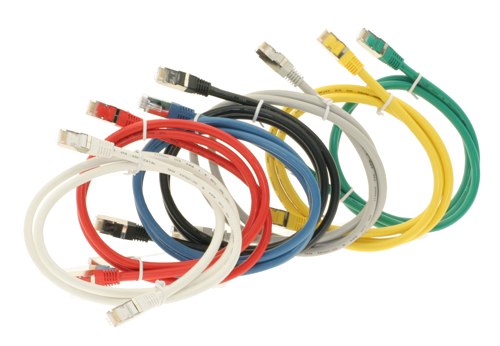Continued Dominance of Structured Copper Cabling Systems
Copper cabling will remain dominant in the structured cabling systems industry. This conclusion is based on analysis and forecasts made by several cabling installation companies worldwide. Both copper and optic fiber cabling are used for key structured cabling systems applications like LAN, data centers, and Voice over Internet Protocol (VoIP). Optic fiber is gradually gaining in popularity, but copper cable still seems to be the major preference of most companies.
will remain dominant in the structured cabling systems industry. This conclusion is based on analysis and forecasts made by several cabling installation companies worldwide. Both copper and optic fiber cabling are used for key structured cabling systems applications like LAN, data centers, and Voice over Internet Protocol (VoIP). Optic fiber is gradually gaining in popularity, but copper cable still seems to be the major preference of most companies.
Figures were presented showing that copper cabling maintained a 76.8 percent share of the entire market (USA) in 2009. This is even projected to increase to 79.1 percent this year (2014). Fiber cabling is expected to make headway in the data center cable market, but copper cabling will be used to a large extent in forthcoming VoIP systems. This configuration calls for longer distances and detached horizontal cabling between telecommunications rooms and telephone units to ensure voice quality.
Hence, copper cabling will definitely be the main preference for Local Area Network cabling applications. Furthermore, industry stakeholders believe that VoIP implementation will bank on a large quantity of copper cabling in the near future. The disproportion of restricted distance requirements in data center fiber applications is counterbalanced by copper cabling’s lengthy distance capacity.
Why do many corporate organizations continue to choose copper cabling over optic fiber? Cabling is the foundation of your network. The system must be dependable and resilient at all times. Moreover, there is no point in replacing this system repeatedly. Shielded copper cables provide stability and consistent protection for signal transmission against possible interferences. On the other hand, unshielded copper is more economical and less difficult to install. These are the primary reasons why copper cabling is used considerably worldwide.
Copper can no longer be considered slow. Some versions of Gigabit Ethernet operate on improved Cat5, and the technology allows enough reserves for applications equal to 1 Gigabit Ethernet. However, Cat5 cables only have a capacity of 25 pounds in terms of pulling tension. This is meant to prevent any damage to the fragile mechanical structure providing high performance needed in high bit rate structures. Nevertheless, this is still a big step forward with regards to data transmission and a challenge for flaccid infrastructure.
This brings us to the importance of copper cabling certification and testing. Certification authenticates that the installation was conducted in compliance with existing terms and conditions as well as industry standards. In the process of copper cabling testing, the major considerations are visual examination, test measurement, and documentation. Ocular checks include spaces, passageways, equipment rooms, and telecommunications areas or cabinets. Inspections cover infrastructure, cable installation, cords, and labeling of all components. Accurate dimensions are taken by the inspectors while the corresponding paperwork is accomplished.

